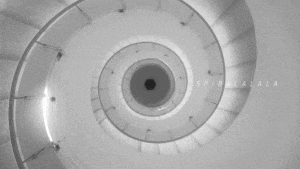GROUP PROJECT | STEP1.1: How I Define Interaction
In my first blog, I’d like to summarize the perspectives from the three mandatory research readings and propose my own definition of interaction.
Chris Crawford, in his book The Art of Interactive Design, defines interactivity in terms of a conversation: a cyclic process in which two actors alternately listen, think, and speak. I agree with the key point he mentioned: There are two actors, not one. I understand the “actor” to mean something that can be input and output. This connects to the advice Tom Igoe put forward in his blog that both two “actors” need to be input and output so artists and designers shouldn’t pre-script what will happen. To quote,
“Once you’ve made your initial statement by building the thing or the environment and designing its behaviors, shut up.” “How people interact with your work will change over the course of its presentation. If you’re making interactive artwork, that is the conversation you’re having with the people for whom you make your work.”
This prompted me to think about what kind of interactive artworks I want to make in the future.
Crawford also presented an interesting idea that we can think of interactivity as a continuous variable with relative measures. Thus anything can be interactive and all we need to do is discuss the degree of interactivity subjectively. According to Lev Manovich’s book Language of New Media, the MIT Media Lab developed projects devoted to “high-level” automation of media creation and use: a new kind of human-computer interface where the computer presents itself to a user as an animated talking character. The character, generated by a computer in real-time, communicates with the through user natural language; it also tries to guess the users emotional state and to adjust the style of interaction accordingly. I think this kind of project has been interpreted as highly interactive.
So in my opinion, interaction can be understood as mutual action or influence between two or more people or things. The point is, they have to communicate with or react to each other.
SPIRALALALA – singing architecture

During MDF Festival, some artists have changed the iconic spiral staircase of the Szczecin Philharmonic into 35m long / 15m high spatial voice-transforming instrument. While it doesn’t look like a highly interactive project at first glance, when I saw the video, I was blown away by how it presented.
The audience has been invited to experiment with various spatialised sound effects applied to their vocalisations that were synchronised with the movement of the balls falling along 35m long track. The interaction starts with insertion of the ball into the microphone. The sound transformations applied to the recording and the light trail following the ball were synchronised with the current speed and position of the ball. The designers were using five speakers – one per floor, so they were able to achieve spatialisation of the sound creating the illusion of the sound “falling” with the ball.
All of this adds up to a stunning effect and as far as I am concerned, aligns with my definition of interaction. Though in this project, the audience just put the ball into the microphone and recorded a short piece of their own voice, I think they’ve understood the designers’ vision for integrating new media art practice with architecture and breathing the life into static form thanks to digital technology.

I was surprised to see 又见敦煌 in the interactive category of the site because I had seen the performance myself in Dunhuang.
“See Dunhuang Again” uses the world’s original “walk-in” scene theater performance technology to create a large-scale indoor scene experience play, with desert as the background and Dunhuang culture as the connotation. In this large-scale musical drama, Redline and D3 joined in again to help create those dream-like realistic scenes with a large number of projections, and created a spectacular immersive visual feast by combining the virtual and the real.
I still remember the fresh and unique feeling it brought me. That was not so much an experience of watching a performance as a personal experience of time traveling into the past. However, though it provide the audience with immersive theater experience, an audience is still just an audience. The actors and the plot won’t change depending on the audience’s reaction. It’s missing the interactive part – which need both two “actors” to be input and output.